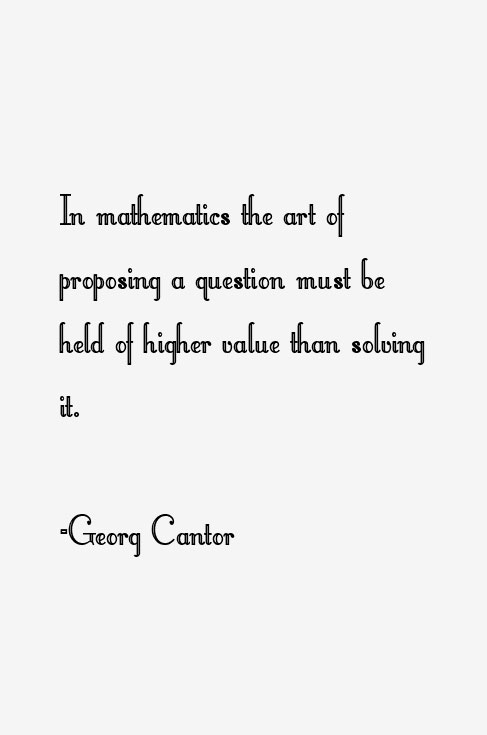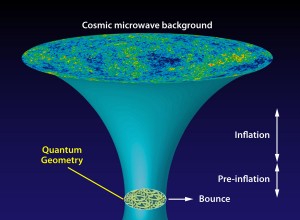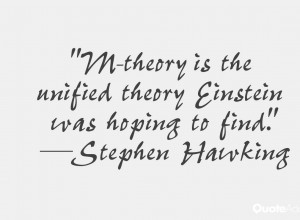All the measurements in the world do not balance one theorem by which the science of eternal truths is actually advanced. March 14, 1824. On Mathematics. As quoted in Carl Friedrich Gauss: Titan of Science (1955) by Guy Waldo Dunnington. p. 360.
I last showed how one can use the Källén–Lehmann spectral representation of the Clifford algebra corresponding to the tangent bundle of the D-3 brane’s 4-D world-volume to get:
![Rendered by QuickLaTeX.com \[H_3^b\left( \upsilon \right) = \frac{{{l^4}}}{{{\upsilon ^4}}}\left( {1 + \sum\limits_{n = 0}^\infty {\frac{{{c_{2n}}}}{{\left| {\mathop \upsilon \limits^ \to } \right|2n}}} } \right){\Upsilon _{_{2n}}}\left( {{{\cos }^2}\varphi } \right)\]](https://www.georgeshiber.com/wp-content/ql-cache/quicklatex.com-14dd9164c719147cdae18488be09bf65_l3.png)
with:
![]()
and:
![]()
being the scalar spherical harmonics on ![]() , to derive the full particle spectrum of any theory of quantum gravity and of quantized space-time. One must realize though that the instanton dynamically curves the string world-sheets, and that entails their Feynman space-time propagation must be summed over curved space-time. Let us see how that is done. My goal here is to analyze the 2-D action for the parametric coordinates
, to derive the full particle spectrum of any theory of quantum gravity and of quantized space-time. One must realize though that the instanton dynamically curves the string world-sheets, and that entails their Feynman space-time propagation must be summed over curved space-time. Let us see how that is done. My goal here is to analyze the 2-D action for the parametric coordinates ![]() that are Fukaya coupled to 2-D gravity satisfying Sasaki-Einstein conformal invariance, and I will concentrate on closed strings for the deep reason that they describe metaplectic solitonic D-p-branes that topologically ‘live’ in the closed string theory RR sector. First, note that when the instanton
that are Fukaya coupled to 2-D gravity satisfying Sasaki-Einstein conformal invariance, and I will concentrate on closed strings for the deep reason that they describe metaplectic solitonic D-p-branes that topologically ‘live’ in the closed string theory RR sector. First, note that when the instanton ![]() is coupled to
is coupled to ![]() , as it must by unitarity, it allows us to derive:
, as it must by unitarity, it allows us to derive:
![]()
which is the Euler topological invariant number for the string world-sheets and uniquely lifts to the brane world-volumes. Such an invariance allows us to derive the closed instantonic string action:
![Rendered by QuickLaTeX.com \[\begin{array}{c}S_{cld}^s = - \frac{1}{{4\pi \alpha '}}\int_{\partial E_S^5} {{d^2}} \sigma d\,\Omega \,{\left( {{\phi _{INST}}} \right)^2}\sigma \sqrt { - \gamma } \left( {\phi \left( {\overline X } \right)} \right.{R_{icci}} + {\gamma ^{\alpha \beta }}{{\not \partial }_\alpha }{X^\mu }{g_{\mu \nu }}\left( {\overline X } \right)\\ + \frac{1}{{\sqrt { - \gamma } }}{\varepsilon ^{ - H_3^b}}{{\not \partial }_\alpha }{X^\mu }{\varepsilon ^{\alpha \beta }}{{\not \partial }_\beta }{X^\nu }{b_{\mu \nu }}{\left( {\overline X } \right)^2}\end{array}\]](https://www.georgeshiber.com/wp-content/ql-cache/quicklatex.com-7bb11ce9dfb6fab21b21805a19733b26_l3.png)
with ![]() a scalar,
a scalar, ![]() symmetric,
symmetric, ![]() anti-symmetric, and the beauty is that these are exactly the degrees of freedom identifying the massless vibrational modes of string world-sheets: this is equivalent to a world-sheet theory isomorphic to a 2-D quantum gravity theory with a Fukaya coupling to matter fields. Hence,
anti-symmetric, and the beauty is that these are exactly the degrees of freedom identifying the massless vibrational modes of string world-sheets: this is equivalent to a world-sheet theory isomorphic to a 2-D quantum gravity theory with a Fukaya coupling to matter fields. Hence, ![]() has a super-Poincaré diffeomorphic symmetry:
has a super-Poincaré diffeomorphic symmetry:
![]()
satisfying the following conditions:
![Rendered by QuickLaTeX.com \[\left\{ {\begin{array}{*{20}{c}}{{{\not \partial }_\alpha }{{X'}^\mu } = \frac{{\not \partial {{X'}^\mu }}}{{\not \partial {X^\nu }}}{{\not \partial }_\alpha }X\nu }\\{{{g'}_{\mu \nu }} = \frac{{\not \partial {X^\lambda }}}{{\not \partial {{X'}^\mu }}}\frac{{\not \partial {X^\rho }}}{{\not \partial {{X'}^\nu }}}{b_{\lambda \rho }}}\\{{{b'}_{\mu \nu }} = \frac{{\not \partial {{X'}^\lambda }}}{{\not \partial {{X'}^\rho }}}\frac{{\not \partial {X^\rho }}}{{\not \partial {{X'}^\nu }}}{b_{\rho \lambda }}}\\{\phi ' = \phi }\end{array}} \right.\]](https://www.georgeshiber.com/wp-content/ql-cache/quicklatex.com-09afdc7a1847765d6b0f7d51243e48be_l3.png)
By Heisenberg’s principle for time/energy, the D-p-brane’s p+1 dimensional world-volumes have curvature that is given by:
![]()
and hence transforms as:
![Rendered by QuickLaTeX.com \[\begin{array}{c}\delta S_{cld}^s = - \frac{1}{{2\pi \alpha '}}\int_{\partial E_S^5} {{d^2}} \sigma d\,\Omega {\left( {{\phi _{INST}}} \right)^2}{\varepsilon ^{\alpha \beta }}{{\not \partial }_\alpha }{X^\mu }{{\not \partial }_\mu }{\lambda _\nu }\\ = - \frac{1}{{2\pi \alpha '}}\int_{\partial E_S^5} {{d^2}} d\,\Omega {\left( {{\phi _{INST}}} \right)^{ - 1/2}}\sigma \,{{\not \partial }_\mu }X\nu {\left( {{\varepsilon ^{\alpha \beta }}{{\not \partial }_\beta }{X^{^\nu }}{\lambda _\mu }} \right)^{{e^{ - H_3^b}}}}\end{array}\]](https://www.georgeshiber.com/wp-content/ql-cache/quicklatex.com-5bb7f2eeea6ee05059227d9661afdb33_l3.png)
That is exactly a description of a string action ‘over’ curved space-time. There is a philosophical upshot here: it is a necessary condition for the solvability of:
![Rendered by QuickLaTeX.com \[\begin{array}{c}S_{cld}^s = - \frac{1}{{4\pi \alpha '}}\int_{\partial E_S^5} {{d^2}} \sigma d\,\Omega \,{\left( {{\phi _{INST}}} \right)^2}\sigma \sqrt { - \gamma } \left( {\phi \left( {\overline X } \right)} \right.{R_{icci}} + {\gamma ^{\alpha \beta }}{{\not \partial }_\alpha }{X^\mu }{g_{\mu \nu }}\left( {\overline X } \right)\\ + \frac{1}{{\sqrt { - \gamma } }}{\varepsilon ^{ - H_3^b}}{{\not \partial }_\alpha }{X^\mu }{\varepsilon ^{\alpha \beta }}{{\not \partial }_\beta }{X^\nu }{b_{\mu \nu }}{\left( {\overline X } \right)^2}\end{array}\]](https://www.georgeshiber.com/wp-content/ql-cache/quicklatex.com-7bb11ce9dfb6fab21b21805a19733b26_l3.png)
that the dilaton is constant (with ![]() the Sasaki-Einstein manifold,
the Sasaki-Einstein manifold, ![]() its boundary), and so the first term is the Euler topological invariant number (mentioned on top) – therefore, the second quantized integral of the D-p-brane partition function, is:
its boundary), and so the first term is the Euler topological invariant number (mentioned on top) – therefore, the second quantized integral of the D-p-brane partition function, is:
![Rendered by QuickLaTeX.com \[P_{{\rm{int}}}^{Dp} \equiv \not Z = \sum\limits_{\gamma = 0}^\infty {\underbrace {\int {{{\not D}^{SuSy}}\gamma {{\not D'}^{SuSy}}X{e^{S_{cld}^s}}} }_{{\rm{Topologies}}}} \]](https://www.georgeshiber.com/wp-content/ql-cache/quicklatex.com-6b94ce686f3d93b2aa0ad1ef5d9550c3_l3.png)
where ![]() is the supersymmetry group covariant derivative.
is the supersymmetry group covariant derivative.
Now, since:
![Rendered by QuickLaTeX.com \[\begin{array}{c}\delta S_{cld}^s = - \frac{1}{{2\pi \alpha '}}\int_{\partial E_S^5} {{d^2}} \sigma d\,\Omega {\left( {{\phi _{INST}}} \right)^2}{\varepsilon ^{\alpha \beta }}{{\not \partial }_\alpha }{X^\mu }{{\not \partial }_\mu }{\lambda _\nu }\\ = - \frac{1}{{2\pi \alpha '}}\int_{\partial E_S^5} {{d^2}} d\,\Omega {\left( {{\phi _{INST}}} \right)^{ - 1/2}}\sigma \,{{\not \partial }_\mu }X\nu {\left( {{\varepsilon ^{\alpha \beta }}{{\not \partial }_\beta }{X^{^\nu }}{\lambda _\mu }} \right)^{{e^{ - H_3^b}}}}\end{array}\]](https://www.georgeshiber.com/wp-content/ql-cache/quicklatex.com-5bb7f2eeea6ee05059227d9661afdb33_l3.png)
it follows that no topology in the sum is degenerate, and thus the closed string has a solvable action in curved space-time that needs no renormalization.
… to be continued for open strings.
I don’t think that any physicist or mathematician would have been clever enough to have invented string theory on purpose … Luckily, it was invented by accident. Edward Witten, New York Times Magazine, (1987) Oct.18!




